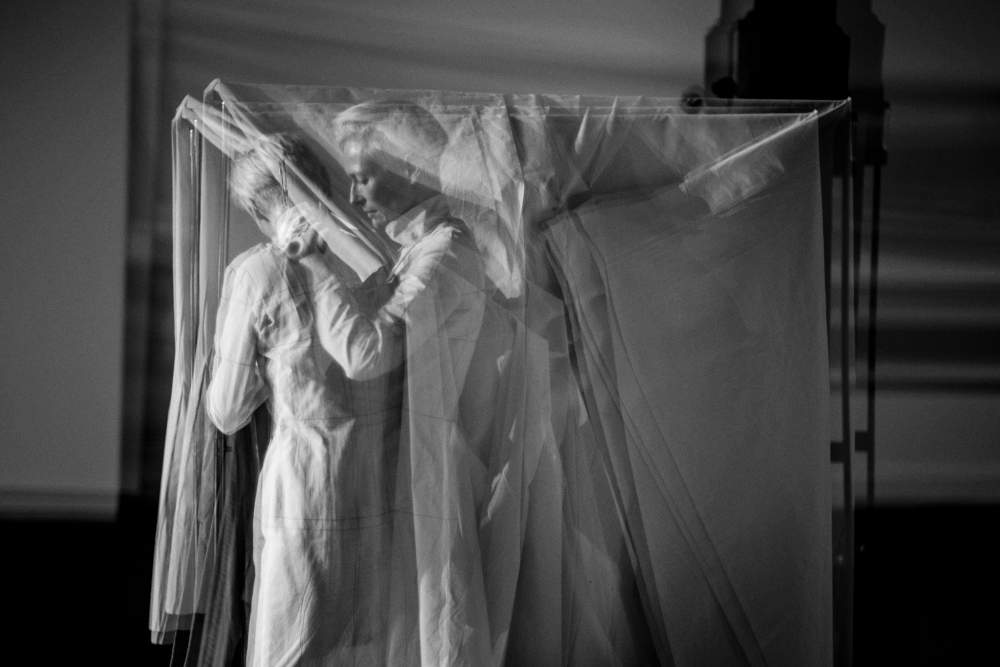At the Palazzo delle Esposizioni the first Italian solo exhibition of Ruediger Glatz, dedicated to Pasolini
From July 8 to September 4, 2022, the Palazzo delle Esposizioni in Rome presents the first solo exhibition in Italy by German photographer Ruediger Glatz (Heidelberg, 1975), entitled Reflecting Pasolini. Curated by Alessio de’Navasques, the exhibition will display more than sixty black-and-white images dedicated to Pier Paolo Pasolini, on the centenary of his birth; it is promoted by Roma Culture and organized by Azienda Speciale Palaexpo, as part of the PPP100 - Roma Racconta Pasolini program promoted by Roma Capitale Assessorato alla Cultura with the coordination of the Cultural Activities Department.
The artist’s images show the ineffable loneliness, the existential drama that recurs in Pasolini’s work, the emptiness left by the characters who lived in and passed through the places that have now become tòpoi of his literary and cinematic production. With a clinical, almost documentary vision, and traversed by a deep lyricism, Glatz has made a true journey of approaching Pasolini, encountering him in a process of reflection and refraction that mirrors and traverses objects, situations and memories.
That “magical and unexpected quality” of photography, which Walter Benjamin defined as a “minimal spark of chance,” guided him in documenting the performance Embodying Pasolini, conceived and interpreted by actress and performer Tilda Swinton and curator and fashion historian Olivier Saillard and presented in June 2021 in the spaces of the Mattatoio in Rome.
In the exhibition, never-before-seen images chronicle the performance experience. In powerful black and white, through prolonged or multiple exposures of the film, Glatz captured the actress’s transfiguration, the austere sacredness of the movements, their flawless and silent dramaturgy. Recreated by the monumental costumes created by Danilo Donati, investigated by Swinton and Saillard in their material and immaterial sculptural quality, Pasolinian cinematography lives again in the absence and memory of the characters who wore those clothes. The images evoke the Jocasta played by Silvana Mangano in Oedipus Rex, Hélène Surgére’s terrible Signora Vaccari in Salò or the 120 Days of Sodom, the picaresque epos embodied by Totò in Cocks and Birds, the phantasmagoria of The Flower of a Thousand and One Nights, to the appearance of Pasolini himself as Chaucer in The Canterbury Tales.
The pathos of the action, Swinton’s enigmatic face, are the reflective device that solicited the photographer’s creativity, triggering a process of knowing Pasolini’s work in the reflection and refraction of this action. Hence the title of the exhibition Reflecting Pasolini and the idea of the project, which is completed with images of places, those that Ruediger Glatz encountered while traversing Italy in search of the imagery of Pier Paolo Pasolini.
The cycle of photographs called On PPP is the story of this geographical and emotional journey, which unfolds in a path that moves between past and present, recording changes and magical persistences, finding in places, objects, certain particular views, details, that same disruptive quality so characteristic of the poet.
“Topographical places, as well as architecture, but also objects, somehow denaturalized, return to be the ’characters’ of the narrative. Pier Paolo Pasolini chose to set his narrative starting from urban, natural, peripheral landscapes, with such a semantic force as to maintain an anthropological and political character even in the fiction of cinema,” the curator wrote. “Thus, Ruediger Glatz restores its memory of scenic and literary space through details, in a process borrowed from the poet himself, which gives his images a new and ambivalent relationship with time.”
From the luminous purity of the details of Giotto and Piero della Francesca’s painting, in Assisi and Arezzo, which offered Pasolini compositional and spiritual suggestions, to the poet’s birthplace, in Bologna, to the shadows of Villa Feltrinelli, Glatz’s lens intends to fill that sense of emptiness, to draw new representations and meanings. In Rome, the photographer’s gaze overlaps that of Pasolini the director and writer, in the representation of a city-set captured from a decentralized, deliberately marginal point of view. Thus Glatz does not seek out the places in Mamma Roma or Accattone or Ragazzi di Vita with philological intent, but finds them in the transversal force of the story, going on to compose his own personal atlas of myths, emotions, symbolic forms: from the arches of the Acquedotti Park in the Roman suburb, to the images that stop the architecture of the Quadraro and Centocelle, the iconic entrance of the Palace of Piazza de Cristoforis in Casal Bertone, the buildings of Donna Olimpia, the view from the roofs of the Slaughterhouse, the facades of the churches of Don Bosco and San Felice da Cantalice, almost stage wings, looming over the lives of the characters. A journey that ideally ends at the Tower of Chia, surrounded by nature, where the photographer’s lens stops, without going beyond the gate of the last beloved refuge, where Pasolini wrote Petrolio.
For info: www.palazzoesposizioni.it
Hours: Tuesday through Sunday from 10 a.m. to 8 p.m. Closed Mondays.
Tickets: Full 10 euros, reduced 8 euros; reduced 4 euros for children and young people aged 7 to 18. Free for children up to 6 years old. Image: Ruediger Glatz, Embodying Pasolini, Performance by Tilda Swinton and Olivier Saillard (2021; Rome, Mattatoio)
 |
| At the Palazzo delle Esposizioni the first Italian solo exhibition of Ruediger Glatz, dedicated to Pasolini |
Warning: the translation into English of the original Italian article was created using automatic tools. We undertake to review all articles, but we do not guarantee the total absence of inaccuracies in the translation due to the program. You can find the original by clicking on the ITA button. If you find any mistake,please contact us.




























